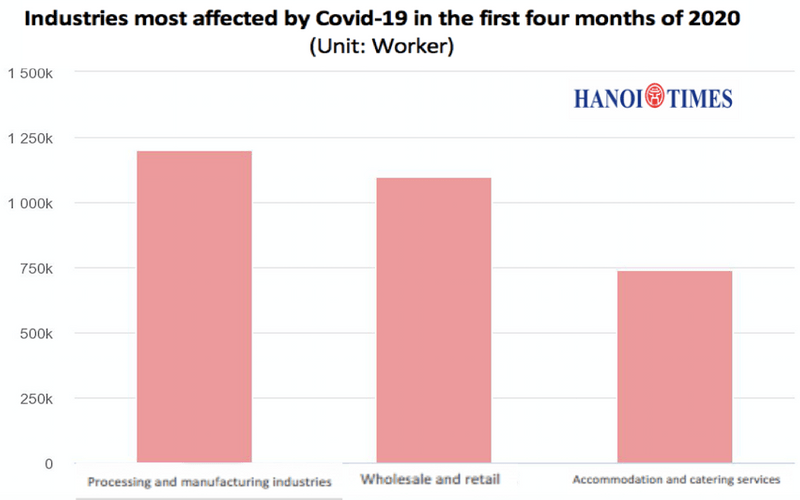Covid-19 hits 5 million laborers in Vietnam
The rate of laborers joining the workforce in the first quarter recorded a 10-year low with 75.4% of the working-age population, down 1.3 percentage points year-on-year.
In the year to mid-April, nearly five million workers in Vietnam have become unemployed or forced to take unpaid leave and 84.4% of enterprises were negatively affected by the Covid-19 pandemic, according to the General Statistics Office (GSO).
| A delivery man waits to deliver a customer’s food from a restaurant on Hanoi’s Com Vong Street. Photo: Pham Nga |
Upon breaking down, 59% of the affected laborers have been put on furlough, 28% faced a reduction in working hours and 13% are now out of work, stated the GSO in a survey regarding the impacts of the pandemic to the labor market.
Meanwhile, the number of laborers affected in the January-March quarter was one million.
The manufacturing and processing sector was hit hardest with over 1.2 million workers harmed by the pandemic, followed by wholesale and retail with 1.1 million, hospitality and catering services with 740,000.
Additionally, the rate of workers joining the workforce in the first quarter recorded a 10-year low with 75.4% of the population aged 15 and over, down 1.3 percentage points year-on-year.
The unemployment rate and the rate of labor underutilization of laborers aged 15 and more in the first quarter are also at the highest over the last five years, with the former soaring to 2.22%, up 0.05 percentage points year-on-year.
Such impacts are predicted to continue in the coming time, requiring efficient implementation of government’s relief packages to support economic recovery in general, the labor market and the business community in particular, said the GSO.
According to the GSO, workers in informal sectors, or those without labor contracts, on low wages, as well as young and old workers, are among the most vulnerable groups in the pandemic.
A view is shared by the International Labor Organization (ILO), saying the crisis will hit informal workers especially hard, as they lack the basic benefits usually provided by a formal job, including social protection coverage.
Latest data from the ILO revealed in 2019, 38.1 million people in Vietnam worked in the informal (unregistered) sector.
In its latest report, the ILO said while Vietnam’s labor market has been under pressure with the strictest Covid-19 containment measures on travel, the partial lockdown and the closure of non-essential businesses were all applied from mid-March, their full effect are expected to be seen in the second quarter.
The ILO envisaged two scenarios: one lower-impact scenario in which containment measures are eased during the second quarter, and one higher-impact scenario where the measures remain largely in place.
Looking at the two scenarios, the ILO estimated that by the end of the second quarter the crisis can affect the livelihood of 4.6 to 10.3 million workers, whether through a decline in working hours, in wages or, ultimately, job loss.
Based on the higher-impact scenario, this includes 3.8 million workers in manufacturing, 2.6 million workers in the wholesale and retail trade, repair of motor vehicles and motorcycles sector, and 1.4 million in accommodation and food service activities.
In the lower impact scenario, 1.8 million manufacturing workers will be at risk, as well as 0.9 million workers in wholesale and retail trade, and 0.9 in accommodation and food service activities.
Agriculture, forestry and fishing, which employs 18.9 million workers, is considered a low-risk sector overall, but challenges may arise for subsectors working on export products, said the ILO.












